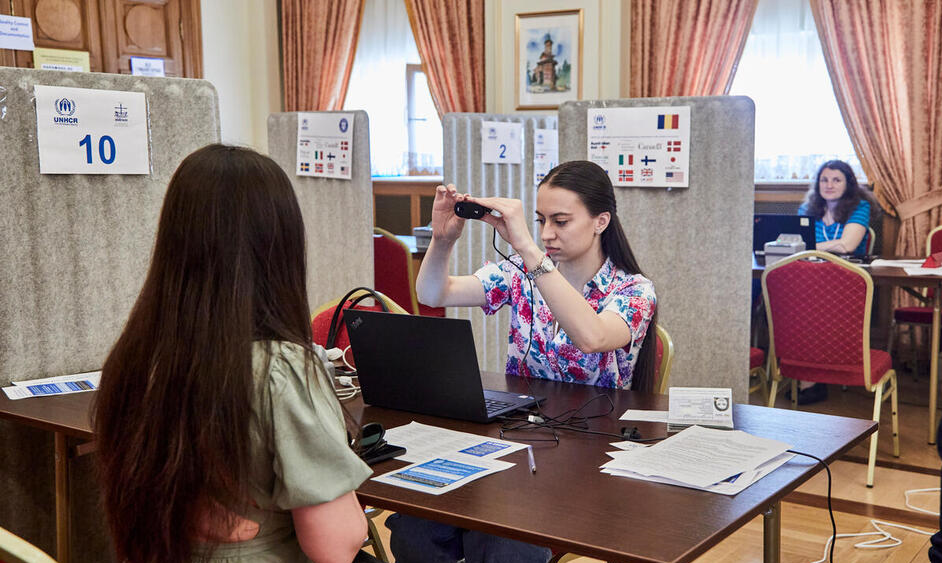
A photo is often the first aspect studied when verifying an identity document. Does the photo on the document look like the person standing in front of me? The significance of the photo on official identity documents is critical. Doubt cast from a poor-quality photo can erode trust, potentially leading to the denial of entry, services, or, in the case of refugees, protection and freedom. Furthermore, a low-quality photo may expose an individual to the risk of identity theft.
Photo quality standards have existed for decades, typically requiring individuals to face forward with a neutral expression when applying for passports or other identity documents. For UNHCR, which operates across a world of different and complex environments, adhering to these international standards has been a consistent priority but not without challenge.
In today’s world, where photo ID is often a minimum requirement for various civil processes and with the growing shift to online service delivery, the importance of photo verification is only increasing. As UNHCR collaborates with states to enhance refugee inclusion in national systems, ensuring that data shared by UNHCR or self-asserted by refugees meets international standards is vital to maintaining trust and confidence in these processes.
UNHCR’s Photo Quality Initiative
As part of its global emphasis on data integrity and refugee inclusion, UNHCR’s Global Data Service has launched a Photo Quality Initiative. As of 25 September 2024, UNHCR’s current registration database includes records of 19,072,007 individuals, of which 15,806,681 have associated photos.
Although UNHCR’s Executive Committee Conclusion 91 of October 2001 stipulated that refugees should be registered on an individual basis and that photographs should form part of the basic data collected, there has been no automated mechanism or international standard to assess the quality of these photos. Measuring consistency and quality across all operations remains a challenge.
The Global Data Service is focusing on enhancing tools and methods to help UNHCR operations worldwide measure and improve the quality of photos taken during refugee registration. This includes reviewing and updating existing photo guidelines, enhancing software technologies, evaluating hardware, and implementing quality assessments on current photo records.
International Collaboration
In pursuit of this goal, the Global Data Service in Copenhagen recently hosted the New Technology Working Group, an international standards body convened by the International Civil Aviation Organization (ICAO). One key topic brought forward by the group was the advancement of a new draft international standard for face image quality assessment: ISO/IEC FDIS 29794-5 (Information technology — Biometric sample quality — Part 5: Face image data). This standard will be instrumental in assessing and ensuring photo quality across UNHCR operations moving forward.
As UNHCR continues to innovate and enhance its registration processes, the Photo Quality Initiative represents a significant step towards improving the integrity of refugee data and ensuring the inclusion of refugees in national systems. By adhering to international standards, UNHCR is working to build trust in the data it collects and shares, ultimately supporting better outcomes for refugees worldwide.
